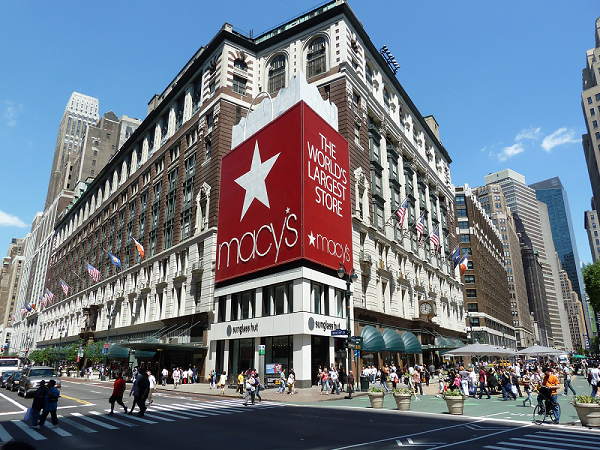
Macy’s announced that it will close 100 of its 675 full-line stores at the end of the current fiscal year. The company expects the aggregate store closures to result in a loss of $1 billion in revenue, although the closures should have a neutral effect on EBITDA, as the lost revenue is expected to be offset by savings on expenses. The closures will have a positive impact on return on invested capital and will help the company accelerate growth.

The company experienced an inflection in sales trends in the second quarter following several quarters of challenging top-line results. In the second quarter, weather was a positive factor, sales in tourist locations improved and apparel as a category showed much improvement across the men’s, women’s and kids’ segments. Management is encouraged by early forecasts of back-to-school results, particularly in the denim category.
Macy’s will operate fewer stores and concentrate on better-performing locations. This decision comes as Macy’s top 150 stores have gained traction and have performed better, widening the gap between the top-performing and bottom-performing stores.
The stores that will be closed will operate normally throughout the fall and holiday season before they move into “store closure” mode in early 2017. Management has not yet decided which specific locations will be closed.
Macy’s, Bloomingdale’s and Bluemercury will also be reinvesting to maintain strong growth in digital sales channels.
Macy’s has been examining real estate opportunities for four of its large downtown flagship stores, located in New York City, San Francisco, Chicago and Minneapolis. The company is in negotiations to sell the Macy’s Union Square Men’s Store in San Francisco for redevelopment.

 Macy’s announced that it will close 100 of its 675 full-line stores at the end of the current fiscal year. The company expects the aggregate store closures to result in a loss of $1 billion in revenue, although the closures should have a neutral effect on EBITDA, as the lost revenue is expected to be offset by savings on expenses. The closures will have a positive impact on return on invested capital and will help the company accelerate growth.
Macy’s announced that it will close 100 of its 675 full-line stores at the end of the current fiscal year. The company expects the aggregate store closures to result in a loss of $1 billion in revenue, although the closures should have a neutral effect on EBITDA, as the lost revenue is expected to be offset by savings on expenses. The closures will have a positive impact on return on invested capital and will help the company accelerate growth.
 The company experienced an inflection in sales trends in the second quarter following several quarters of challenging top-line results. In the second quarter, weather was a positive factor, sales in tourist locations improved and apparel as a category showed much improvement across the men’s, women’s and kids’ segments. Management is encouraged by early forecasts of back-to-school results, particularly in the denim category.
Macy’s will operate fewer stores and concentrate on better-performing locations. This decision comes as Macy’s top 150 stores have gained traction and have performed better, widening the gap between the top-performing and bottom-performing stores.
The stores that will be closed will operate normally throughout the fall and holiday season before they move into “store closure” mode in early 2017. Management has not yet decided which specific locations will be closed.
Macy’s, Bloomingdale’s and Bluemercury will also be reinvesting to maintain strong growth in digital sales channels.
Macy’s has been examining real estate opportunities for four of its large downtown flagship stores, located in New York City, San Francisco, Chicago and Minneapolis. The company is in negotiations to sell the Macy’s Union Square Men’s Store in San Francisco for redevelopment.
The company experienced an inflection in sales trends in the second quarter following several quarters of challenging top-line results. In the second quarter, weather was a positive factor, sales in tourist locations improved and apparel as a category showed much improvement across the men’s, women’s and kids’ segments. Management is encouraged by early forecasts of back-to-school results, particularly in the denim category.
Macy’s will operate fewer stores and concentrate on better-performing locations. This decision comes as Macy’s top 150 stores have gained traction and have performed better, widening the gap between the top-performing and bottom-performing stores.
The stores that will be closed will operate normally throughout the fall and holiday season before they move into “store closure” mode in early 2017. Management has not yet decided which specific locations will be closed.
Macy’s, Bloomingdale’s and Bluemercury will also be reinvesting to maintain strong growth in digital sales channels.
Macy’s has been examining real estate opportunities for four of its large downtown flagship stores, located in New York City, San Francisco, Chicago and Minneapolis. The company is in negotiations to sell the Macy’s Union Square Men’s Store in San Francisco for redevelopment.